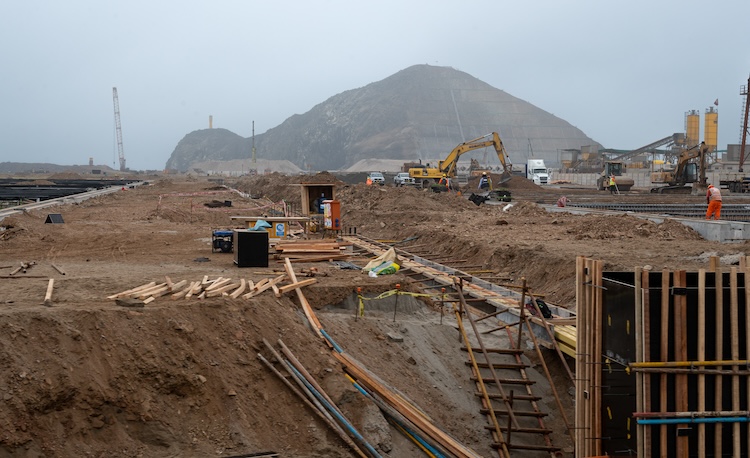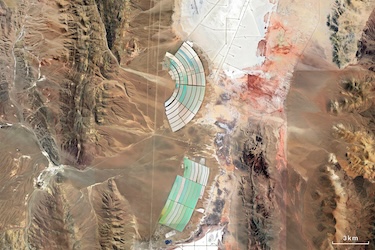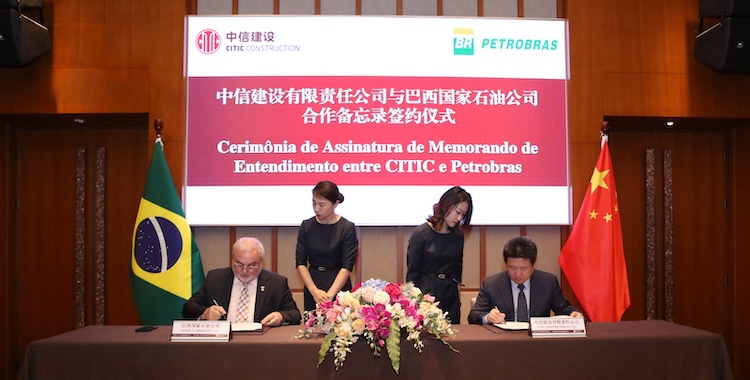By Javier Lewkowicz, Dialogue Earth*
BUENOS AIRES, Argentina | 17 August 2024 (IDN) — In the past decade, Chinese investment into Latin America has so often been characterised by large infrastructure projects: roads, railways, dams and ports, among others, frequently backed by state finance, and in many countries arriving under the banner of the Belt and Road Initiative. But in recent years, the nature of this investment has begun to change.
While China continues to look to its Latin American partners for markets and key resources, it is now Chinese companies, rather than its lenders, that are the main protagonists of investment, with a focus on new technology sectors.
Over the last two decades, China’s economic importance in Latin America has grown steadily. Since 2000, trade between China and the region has increased 35-fold and is expected to continue growing. China is the leading destination for exports from Brazil, Chile, Panama, Peru and Uruguay, and the leading source of imports for Argentina, Brazil, Bolivia, Chile, Colombia, Ecuador, Paraguay and Peru.
At several points during the 2010s, the scale of support from Chinese development finance institutions for infrastructure projects in the region surpassed that of traditional providers such as the World Bank and the Inter-American Development Bank – a trend that has since reversed, however, as such provision declined dramatically in the second half of the decade.
Margaret Myers, director of the Asia and Latin America Program at the Inter-American Dialogue, explained to Dialogue Earth that an overall drop in Chinese investment has been seen both in the region and at the global level, across new investments and mergers and acquisitions. However, she highlights an increase in the number of projects focused on new high-tech sectors.
As the region struggles to meet its financing needs for the transition to clean energy, experts say this shifting pattern of Chinese investment may present new opportunities for Latin American countries, but also challenges associated with the impact on local economic development and the management of socio-environmental tensions.
Foreign direct investment trends
Since 2015, Latin America has seen a significant drop-off in lending by the China Development Bank (CDB) and the Export-Import Bank of China (Chexim), two of China’s three State Council-owned policy banks, which have historically been the most active institutions in providing funds to the region.
Between 2019 and 2023, the region received an average of USD 1.3 billion per year from the CBD and Chexim, with the majority of the total concentrated in 2019 and 2023 alone; loans dropped to zero in 2020 and made a slow post-pandemic recovery in 2021 and 2022. By contrast, in 2010 the CDB alone lent nearly USD 25 billion. Last year, the only two credit schemes granted in the region by these institutions were to Brazil’s BNDES bank, to support infrastructure development and the green economy.
Rebecca Ray, a researcher on China and Latin America’s economic relations at the Boston University Global Development Policy Center, explained these trends to Dialogue Earth: “We see less intervention by financial institutions and more action by companies. In Latin America, the last decade saw the peak of investment operations through financial institutions, first through the oil sector and then in infrastructure.”
Enrique Dussel Peters, coordinator of the Centre for China-Mexico Studies at the Autonomous University of Mexico (UNAM), says such changes are a sign of a growing familiarity and understanding. “These trends are the result of the learning process of Chinese companies over more than two decades in the region, and of Latin American officials and companies themselves with respect to China,” he says.
Experts point to the deepening engagement between China and Latin America through lending for infrastructure works, often designed by the host countries themselves and implemented in conjunction with local companies, as having allowed Chinese investors to gradually learn about regulatory and labour issues, as well as local idiosyncrasies.

“For China, the way of doing business in the region was a novelty and over the years it gained experience and learned,” Ray said. This learning, she added, has since “allowed Chinese companies to be able to jump directly into investments” without relying on backing from bank loans as they previously had. “But in addition, the big public banks are now busier in providing credit in China itself, which is needed to boost the domestic economy.”
The fall in lending by Chinese development finance institutions has been greater than the increase in investment by private companies, meaning that the total amount of Chinese investment in the region has fallen. According to data from the China Overseas Foreign Direct Investment Monitor for Latin America and the Caribbean, Chinese FDI in 2023 stood at USD 8.748 billion, accounting for roughly 10% of all FDI arriving into the region.
New priorities and ‘new infrastructure’
Priority sectors for Chinese investment have also changed. Most loans provided by the CDB and Chexim were historically directed to support infrastructure, extractive industries such as mining, pipelines, the power sector and manufacturing. From these operations, China gradually became a leading developer and builder of infrastructure projects not only in the region but throughout the Global South.
Now, Myers explains, there is a new focus on specific sectors that China considers a priority for its own development. “We call them the ‘new infrastructure’, to refer to the innovation sectors,” she says. “Over the last two decades China’s growth has depended very heavily on the retail, manufacturing and construction sectors, but now innovation in high-tech sectors are the areas that China wants to prioritise in order to grow and boost its global competitiveness. So we see massive efforts to grow these industries, with very significant subsidies in China and abroad.”
Among these priority sectors are electric vehicles, solar panels, batteries, digitalisation, telecommunications, financial technology, electrification and artificial intelligence. In several of these sectors, Chinese companies occupy a dominant global position, notably in solar panels, batteries and EVs, dubbed its “new three” exports; China accounts for more than 80% of solar panel exports, 50% of lithium batteries and more than 20% of EVs. In turn, these “new infrastructure” sectors accounted for 58% of Chinese foreign investment in Latin America and the Caribbean in 2022, and over 60% of the number of projects announced by Chinese companies during the year.
In the electric vehicle and battery sector, automakers BYD, Foton and Chery are among the leading Chinese companies, both in the region and globally. BYD alone aims to produce more than 150,000 electric and hybrid vehicles annually at a planned factory in Brazil, and has already started production of a lithium battery-powered bus, manufactured in the Amazon city of Manaus.
The renewable energy sector has also emerged as a major focus of Chinese investment in the region, particular in solar power, for which the country is also an essential supplier. Eight of the ten largest solar panel providers in the region are Chinese, led by the firms Longi, Jinko, Trina and JA. The Cauchari solar park in Argentina’s Jujuy province, among the largest in the region, was financed via a loan from the CDB and built by Chinese contractors.
In terms of mergers and acquisitions, some of the largest deals involving Chinese capital in the region have arrived in Argentina’s lithium sector. Of particular note is Chinese miner Ganfeng Lithium’s purchase in 2022 of Argentine firm Lithea to develop the Pozuelos-Pastos Grandes project for USD 962 million, and Zijin Mining Group’s 2021 deal to take over Canada’s Neo Lithium and exploit the Tres Quebradas deposit for USD 737 million. The other big deal in the region was Great Wall Motor’s 2021 acquisition of a Daimler factory in Brazil, where it will develop electric cars in the country.

Satellite view of Ganfeng Lithium’s Cauchari-Olaroz lithium plant in Jujuy province, Argentina. The Chinese company bought Argentine firm Lithea in 2022 to develop another lithium project in Salta province (Image: Airbus / Maxar Technologies via Google Earth)
Likewise, in the field of telecommunications, Chinese firm Huawei is expanding in the region, especially in Argentina, Brazil, Chile, Colombia, Mexico and Peru through the installation of data centres and cloud computing – largely welcomed within Latin American countries, but a source of concern among some Western observers.
A UNAM survey led by Dussel Peters summarised the changing dynamics in Chinese investment priorities. “Sectors linked to raw materials – metals, minerals and mining – continue to predominate in China’s investment in Latin America, with 34% of the total in 2020-2023, although well below their share of 81% in 2005-2009,” it reports. “In contrast, energy, particularly non-fossil energy, and automotive and auto parts sectors have become the most dynamic sectors in the last decade.”
More politics, more market
Since 2005, Venezuela, Brazil, Argentina and Ecuador have been the region’s leading destinations for loans issued by Chinese policy banks. With such financing having frequently been seen by some observers as being politically motivated, the trend towards smaller, company-led projects could suggest that the new forms of Chinese investment in the region relate more to market conditions. However, Myers warns that such a reading of the situation is not entirely accurate.
“There were three things that China pursued with country-country loans, under the so-called ‘going out’ strategy: market-seeking, resource-seeking and business internationalisation,” she explains. “Today, China maintains these objectives, in particular for mineral resources that are critical for the energy transition and markets in high value-added sectors. It’s the forms [of investment] that have changed.”
During the past two decades, China’s engagement with the region through loans from financial institutions had a greater impact on some countries that were experiencing difficulties in accessing other types of financing, as was the case with Venezuela, Argentina and Ecuador. Brazil had greater access to alternative financing, and Chinese capital inflows were closely linked to oil, including offshore projects in partnership with state-owned oil firm Petrobras.

“Loans were given to governments but with Chinese equipment requirements, which was also a way of opening markets and promoting the insertion of [Chinese] companies in the region,” adds Myers.
In terms of the destinations of Chinese investment in the region, the China Investment Monitor notes that there has been a diversification of focus countries and sectors, and ownership by Chinese companies. It details that between 2020-2023 Brazil maintained its place as the leading recipient of Chinese investment, with 34% of all investments, followed by Argentina (22.5%), Mexico (15%), Peru (11%) and Chile (8.7%). In Argentina and Peru, Chinese participation the mining sector has become particularly prominent, in lithium and copper, respectively. Meanwhile in Chile, in addition to its own lithium sector, there are also said to be opportunities for Chinese investment in the country’s energy transition. In Mexico, the automotive sector is the main attraction.
Another notable aspect of Chinese investment in the region is a high concentration of investment among a small number of firms. The UNAM survey revealed that “just five Chinese companies – State Power Investment Corporation Limited (SPIC), State Grid Corporation, Tibet Summit Resources, Jiangxi Ganfeng Lithium and Zijin Mining Group – accounted for 46% of Chinese outbound direct foreign investment in Latin America and the Caribbean during 2020-2023.”
Latin America and the Caribbean require huge investments in infrastructure in order to boost their energy transitions, which will also entail far-reaching changes in industry, society and land use. In this context, China offers possibilities as an investor and supplier.
However, Myers expresses caution over an over-reliance on China without also improving local capacities. “The risk is that the region will become trapped in dependency and fail to develop its own competitiveness in this process,” she says. “If there is no effort to require investors to provide technology transfer and to come up with initiatives in education and incorporation of local labour, the region will not be able to step up its development in these sectors.”
“The risk is that the region will become trapped in dependency and fail to develop its own competitiveness:” – Margaret Myers, director of the Asia and Latin America Program at the Inter-American Dialogue
Some of the sectors in which China has focused its investments, such as energy, mining and lithium extraction, are also noted for their significant environmental footprint. Although many ongoing projects in these fields are individually smaller than those backed by the large loans of the previous decades, and the companies leading them are now more experienced in negotiating with stakeholders, a greater number of initiatives in the pipeline nonetheless poses potential risks.
In this regard, Myers suggests that new investments might lead to socio-environmental conflicts that differ from those previously seen in the region. “This is another great challenge for the region, as governments, companies and civil society organisations must be able to generate conditions for negotiation and dialogue that make it possible to make projects viable in a sustainable manner.”
*Javier Lewkowicz is an Argentine journalist who writes on China and the environment. He writes on Página/12. [IDN-InDeprhNews]
Original link: https://dialogue.earth/en/business/how-is-chinese-investment-in-latin-america-changing/
Photo: Brazilian president Luiz Inácio Lula da Silva visits a Huawei research centre in Shanghai in 2023. Across Latin America, Chinese companies are increasingly investing in ‘new infrastructure’, such as digital industries. Credit: Ricardo Stuckert / Presidência Brasil.


